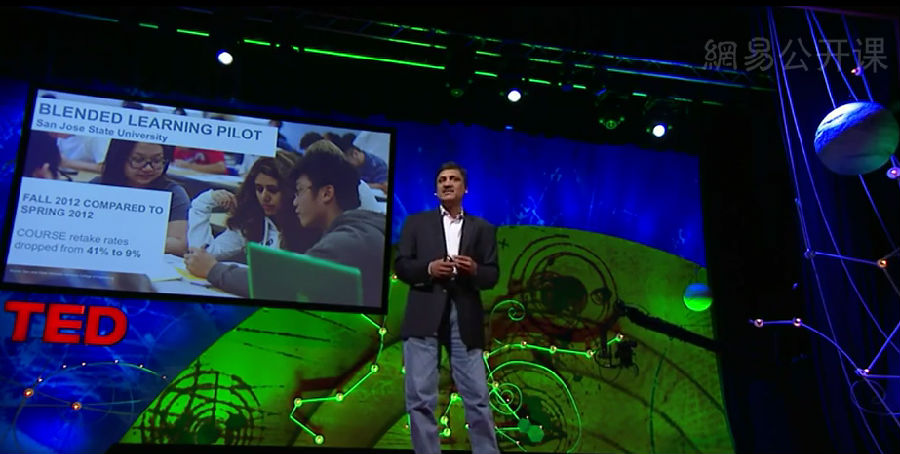We were also doing other pilots. So we did a pilot experimental blended courses, working with San Jose State University in California,
我们也在做其他的试验。我们做了一个试验性的混合实验课程,再一次关于电路与电子技术
again, with the circuits and electronics course. You'll hear that a lot. That course has become sort of like our petri dish of learning.
同加利福尼亚州的圣何塞州立大学合作。你将多次听到这门课。该课程已成为我们获取知识的培养皿。
So there, the students would, again, the instructors flipped the classroom, blended online and in person, and the results were staggering.
在那里,学生们会再次在经过老师改造的课堂教学模式中将在线教学和课堂教学相结合,结果令人吃惊。
Now don't take these results to the bank just yet. Just wait a little bit longer as we experiment with this some more, but the early results are incredible.
到目前为止这些结果还不够真实。还得等我们对此进行更长时间的试验,但早期的结果已经叫人觉得不可思议。
So traditionally, semester upon semester, for the past several years, this course, again, a hard course, had a failure rate of about 40 to 41 percent every semester.
用传统的教学方式,一个学期接一个学期,在过去几年里,这门课,这门难学的课,每个学期大约有40%到41%的失败率。

With this blended class late last year, the failure rate fell to nine percent. So the results can be extremely, extremely good.
去年年底的这种混合教学将失败率降到9%。这种结果可以说是非常,非常好。
Now before we go too far into this, I'd like to spend some time discussing some key ideas. What are some key ideas that makes all of this work?
在我们深入探讨之前,我想花些时间讨论一些核心观念,是什么样的核心想法使这一切如此奏效?
One idea is active learning. The idea here is, rather than have students walk into class and watch lectures, we replace this with what we call lessons.
一个观点是主动学习这个观点,不是说让学生走进课堂,听讲座,而是用课程来代替。
Lessons are interleaved sequences of videos and interactive exercises. So a student might watch a five, seven-minute video and follow that with an interactive exercise.
这类课程包括连续分节的教学视频和互动练习。所以学生可能看一段五分钟或七分钟的视频,并按视频内容做互动练习。
Think of this as the ultimate Socratization of education. You teach by asking questions.
把它看做是终极的苏格拉底式教育。通过提问来教学。













